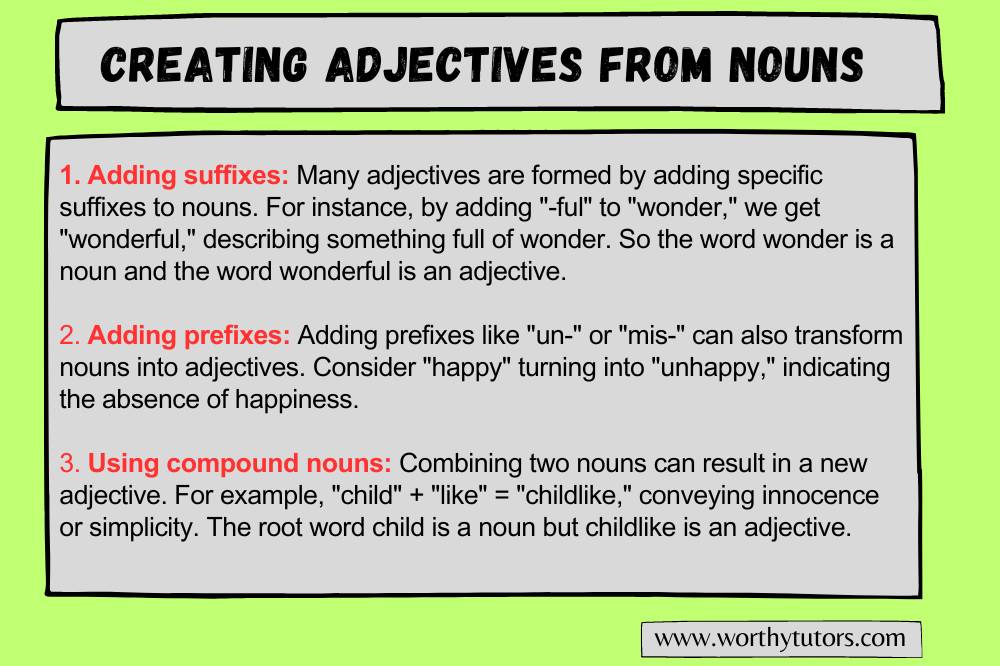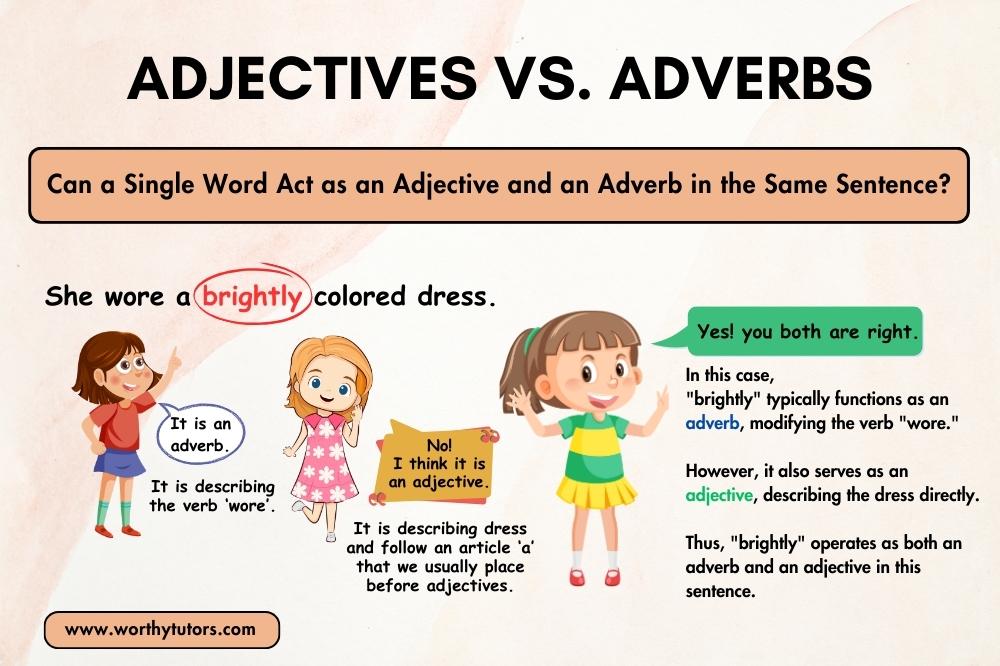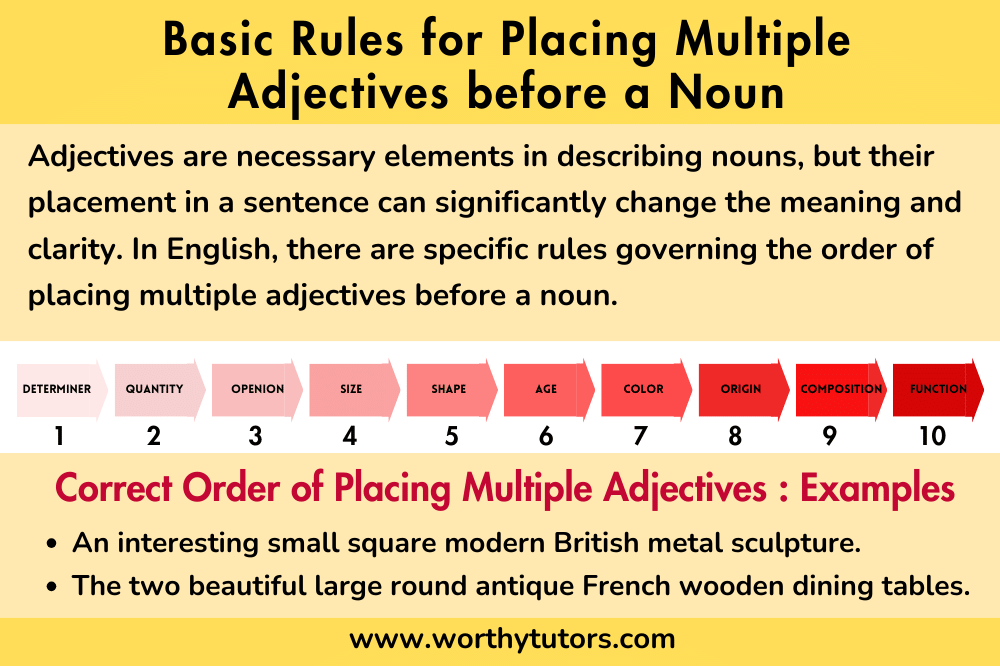
How to Make Adjectives from Nouns
Adjectives are like paintbrushes for your sentences, adding colors and details that make your writing vivid and engaging. They allow us to describe and distinguish different aspects of nouns, helping us create clearer images in our minds and effectively communicate our thoughts. In this article, we’ll discuss adjectives, learn how they function, discover the rules to make adjectives from nouns, explore common affixes used to make adjectives, and understand how words can wear the hat of both a noun and an adjective.
What Are Adjectives?
Adjectives are words that modify or describe nouns, giving us more information about them. They answer questions like “What kind?”, “Which one?”, “How many?”, and “Whose?”. For example, in the sentence “The blue sky is clear,” the word “blue” is an adjective that tells us the color of the sky.
Function of an Adjective in a Sentence
Adjectives play a crucial role in sentence structure. They usually come before the noun they modify and provide valuable details that help us grasp the complete picture. Adjectives add some valuable information the noun in a sentence. In the sentence “She wore a sparkling dress to the party,” the adjective “sparkling” adds charm to the dress.
Making Adjectives from Nouns:
Making adjectives from nouns is like giving them a new outfit! We can use various ways to make adjectives from nouns. Below are the some ways to make adjectives from the nouns:
1. Adding suffixes
Many adjectives are formed by adding specific suffixes to nouns. For instance, by adding “-ful” to “wonder,” we get “wonderful,” describing something full of wonder. So the word wonder is a noun and the word wonderful is an adjective.
2. Adding prefixes
Adding prefixes like “un-” or “mis-” can also transform nouns into adjectives. Consider “happy” turning into “unhappy,” indicating the absence of happiness.
3. Using compound nouns
Combining two nouns can result in a new adjective. For example, “child” + “like” = “childlike,” conveying innocence or simplicity. The root word child is a noun but childlike is an adjective.
Common Affixes to Make Adjectives from Nouns:
- -ful: joyful, playful, useful
- -less: fearless, endless, careless
- -able: lovable, washable, teachable
- -ish: reddish, childish, smallish
- un-: unhappy, unsure, unkind
- mis-: misunderstood, misbehaved, mismatched
Dual Function of a Word: Noun and Adjective
Words are versatile and can serve as both nouns and adjectives depending on the context in a given sentence. You cannot label some words as a noun or adjective until they are used in a proper context. Consider “glass” – it can be a noun (a drinking vessel) or an adjective (glass door). This adaptability allows language to be dynamic and expressive.
Examples of words that function as a noun and adjectives at the same time:
- The shiny stars filled the night sky.
- The gigantic elephant amazed the crowd.
- Her voice sounded melodious and soothing.
- The mountainous terrain challenged the hikers.
- The cunning fox outsmarted the other animals.
- He spoke with a confident tone during the presentation.
Conclusion:
Mastering adjectives opens up a world of descriptive possibilities in your writing. These word transformers add life to your sentences, painting a clearer picture in the minds of your readers. By understanding how to create adjectives from nouns, their various functions, and the power of affixes, you’re equipped to enhance your language skills and communicate more effectively. So go ahead, sprinkle your sentences with vibrant adjectives, and watch your writing come to life!


